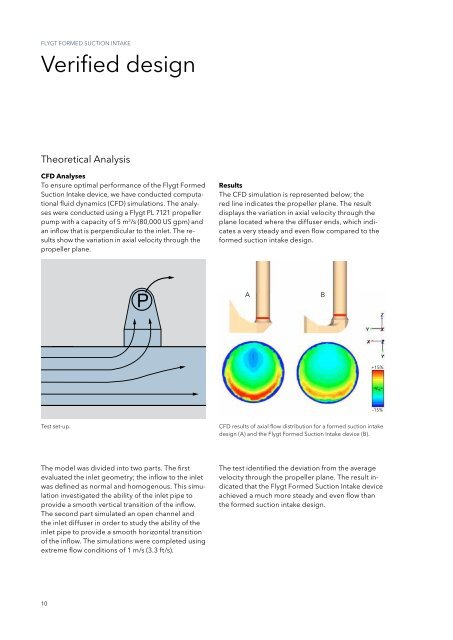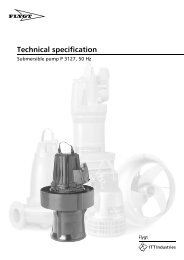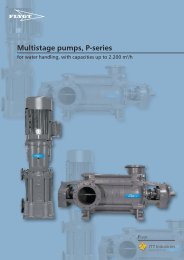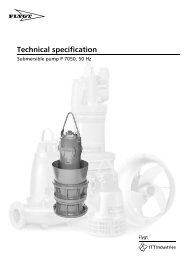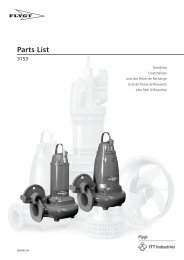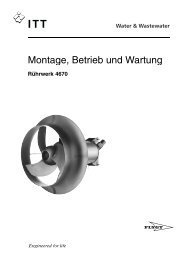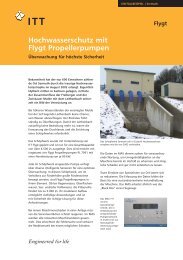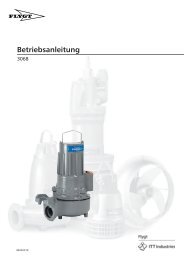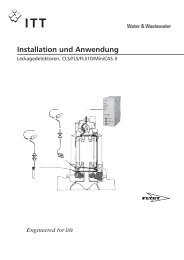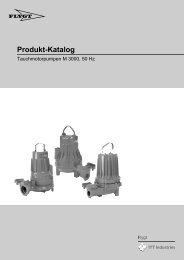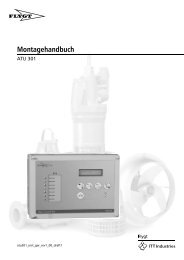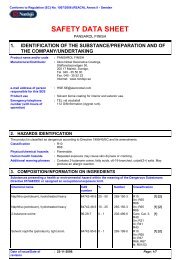You also want an ePaper? Increase the reach of your titles
YUMPU automatically turns print PDFs into web optimized ePapers that Google loves.
FLygT FOrMED sUCTiOn inTAkE<br />
Verified design<br />
Theoretical Analysis<br />
CFD Analyses<br />
To ensure optimal performance of the <strong>Flygt</strong> <strong>Formed</strong><br />
<strong>suction</strong> <strong>intake</strong> device, we have conducted computational<br />
fluid dynamics (CFD) simulations. The analyses<br />
were conducted using a <strong>Flygt</strong> pL 7121 propeller<br />
pump with a capacity of 5 m 3 /s (80,000 Us gpm) and<br />
an inflow that is perpendicular to the inlet. The results<br />
show the variation in axial velocity through the<br />
propeller plane.<br />
Test set-up.<br />
The model was divided into two parts. The first<br />
evaluated the inlet geometry; the inflow to the inlet<br />
was defined as normal and homogenous. This simulation<br />
investigated the ability of the inlet pipe to<br />
provide a smooth vertical transition of the inflow.<br />
The second part simulated an open channel and<br />
the inlet diffuser in order to study the ability of the<br />
inlet pipe to provide a smooth horizontal transition<br />
of the inflow. The simulations were completed using<br />
extreme flow conditions of 1 m/s (3.3 ft/s).<br />
10<br />
Results<br />
The CFD simulation is represented below; the<br />
red line indicates the propeller plane. The result<br />
displays the variation in axial velocity through the<br />
plane located where the diffuser ends, which indicates<br />
a very steady and even flow compared to the<br />
formed <strong>suction</strong> <strong>intake</strong> design.<br />
A<br />
B<br />
+15%<br />
–15%<br />
CFD results of axial flow distribution for a formed <strong>suction</strong> <strong>intake</strong><br />
design (A) and the <strong>Flygt</strong> <strong>Formed</strong> <strong>suction</strong> <strong>intake</strong> device (B).<br />
The test identified the deviation from the average<br />
velocity through the propeller plane. The result indicated<br />
that the <strong>Flygt</strong> <strong>Formed</strong> <strong>suction</strong> <strong>intake</strong> device<br />
achieved a much more steady and even flow than<br />
the formed <strong>suction</strong> <strong>intake</strong> design.


